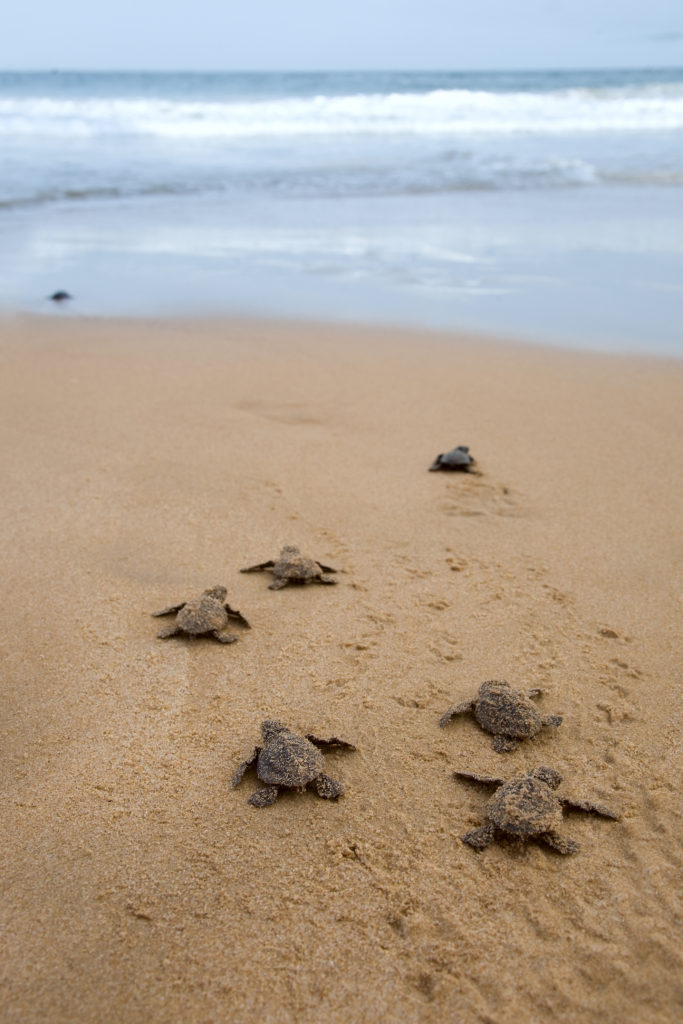
Loggerhead sea turtle hatchlings make their way to the ocean. Florida Sea Grant stock photo
Editor’s Note: This article is republished from UF/IFAS Extension Comings & Goings.
Three Florida Sea Grant agents in the middle Panhandle region of the state have received a half-million dollar grant to mitigate the impacts of artificial lighting on sea turtles.
The work is supported with Natural Resource Damage Assessment funding in a partnership between the Florida Department of Environmental Protection, the Florida Fish and Wildlife Conservation Commission, UF/IFAS Extension and Florida Sea Grant, and will be conducted in Franklin, Gulf and Bay counties by agents Erik Lovestrand, Scott Jackson and Ray Bodrey.
Scientists have long known that artificial light can have negative consequences for many nocturnal animals, including nesting and hatching sea turtles. However, it has only been through recent research that we are beginning to understand the reasons behind some of these effects and develop better lighting strategies to protect our treasured marine turtle species.
The term “phototactic” is used to describe organisms that are stimulated to move towards or away from light. Nesting sea turtles have been shown to avoid bright areas on the beach, but hatchlings tend to be attracted to the brightest source of light when they emerge from the sand.
On a nesting beach with no artificial lighting, any natural light from the moon or stars is reflected off the water, creating a much brighter horizon in the direction that hatchlings need to go. Lights from human sources can appear very bright in comparison, and quite often draw hatchlings over the dunes and into harm’s way on roadways, from predators, or simply by exposure once the sun comes up.
This project involves work with beachfront property owners within 1,000 feet of existing conservation lands to expand the dark-sky area along important sea turtle nesting beaches.
Funds will provide for lighting retrofits based on the following three principles:
1. Keep it Long: Long-wavelength lighting that is still in the portion of the spectrum visible to humans includes amber, orange and red light. Manufacturers are now making highly efficient LED bulbs that are certified by the FWC as turtle-friendly.
2. Keep it Low: Many times lighting needed for safety of access can be placed low enough to be unseen from the nesting beach.
3.Keep it Shielded: Fixtures that are in line-of-site to the nesting beach need to be recessed to shield the bulb from being directly visible. The correct long-wavelength bulb should also be used in these shielded fixtures.
Exterior lighting is not the only danger turtles face from our lights; unobstructed interior lights can be just as much of a problem. The best solution here is to tint beach-facing glass with a 15% transmittance tinting product. The project will also have funds for working with property owners to tint windows and doors that need to be shielded from the beach. This will save money on cooling bills as well as protect interior furnishings and avoid the possibility that someone using a rental property might leave the blinds or curtains open accidentally during turtle season.



